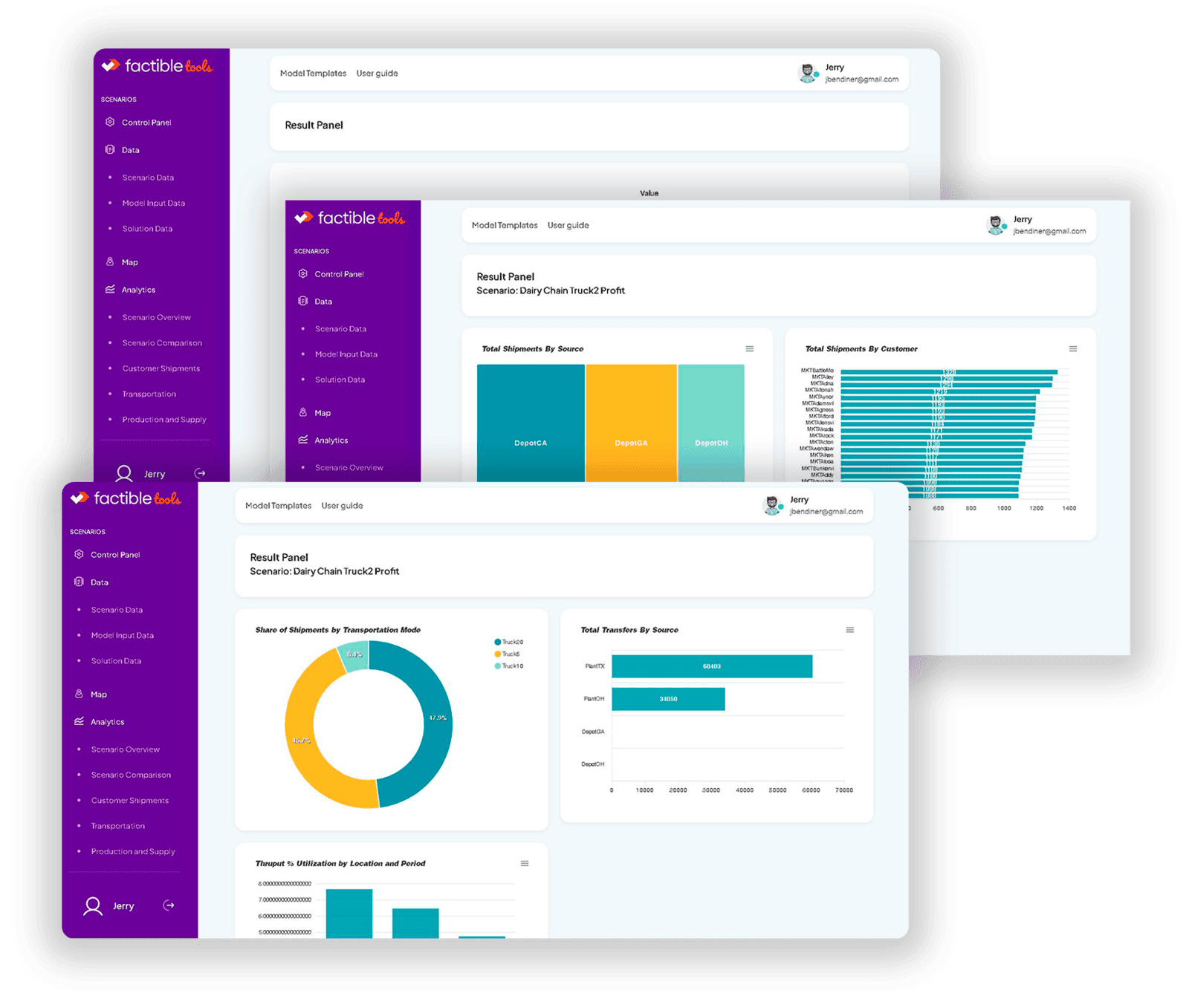
How to Design an Efficient and Adaptive Supply Chain
In today’s rapidly evolving business environment, the ability to configure plants, warehouses, and suppliers effectively is crucial for supply chain efficiency, cost control, and adaptability. These elements directly impact operational costs, product availability, delivery times, and overall customer satisfaction.
Yet, the real challenge isn’t just about finding an optimal configuration—it’s about having the ability to model different scenarios, evaluate trade-offs, and make data-driven decisions. Instead of relying on static network designs or gut instincts, businesses need a dynamic approach that leverages analytics and optimization to continuously refine their supply chain strategy.
This article explores why an optimized configuration matters, the challenges of achieving it, and how modern modeling and analytics tools empower companies to design resilient and efficient supply chains.
Optimizing Supply Chain Configuration: The Power of Modeling and Analytics
A well-configured supply chain isn't just about placing plants, warehouses, or selecting suppliers—it’s about having the ability to test, compare, and optimize different configurations efficiently. Managing this complexity requires the right tools, enabling businesses to move beyond intuition and leverage data-driven decision-making.
To achieve this, planners need a modeling platform that enables:
1. Scenario Exploration at Scale
Instead of relying on static configurations or past experience, a robust supply chain design platform allows users to build and compare multiple scenarios effortlessly.
Should a new plant be closer to raw material sources or customer hubs?
Would a centralized warehouse strategy reduce costs, or would a decentralized model improve service levels?
How would shifting suppliers impact cost, lead times, and risk?
By rapidly testing different options, planners can evaluate trade-offs and make informed decisions backed by data, not assumptions.
2. Mathematical Optimization for Smarter Decisions
Supply chain configuration involves balancing cost, service levels, and resilience across thousands of potential setups. This is where mathematical modeling and algorithms become indispensable.
Advanced optimization techniques can:
Identify the best facility locations to minimize costs and maximize service levels.
Optimize inventory placement to reduce stockouts and excess holding costs.
Determine the most efficient sourcing strategies to balance cost and risk.
Instead of manually evaluating endless possibilities, optimization engines process large datasets and identify solutions that would otherwise be impossible to assess efficiently.
3. Speed and Simplicity Over Complexity
Traditional supply chain design tools often require excessive effort to configure and interpret, leading to slow decision-making and limited adoption. A well-designed platform should minimize unnecessary complexity, enabling planners to focus on strategic insights rather than struggling with cumbersome interfaces and data wrangling.
When scenario modeling and optimization are intuitive and efficient, businesses can:
Respond quickly to market changes.
Reduce planning cycles.
Increase confidence in supply chain decisions.
Rather than following a one-size-fits-all approach, companies should prioritize flexibility—leveraging modeling and analytics to tailor solutions that fit their unique operational goals and constraints.
Conclusion
The optimal mix and configuration of plants, warehouses, and suppliers is not a one-time decision but an ongoing process. Companies that embrace a data-driven approach to supply chain design can reduce costs, enhance efficiency, and improve their ability to adapt to market shifts.
By leveraging advanced modeling tools, businesses can move beyond traditional trial-and-error methods and make strategic decisions that balance cost, service, and resilience. The key is not just finding a theoretically optimal solution but having the ability to explore different possibilities efficiently and continuously refine supply chain strategy as conditions evolve.
Optimize Your Supply Chain with Factible Tools
With Factible Tools, companies can improve decision-making, streamline operations, and build a more agile and efficient supply chain.
Get in touch today to see how Factible Tools can transform your supply chain!

